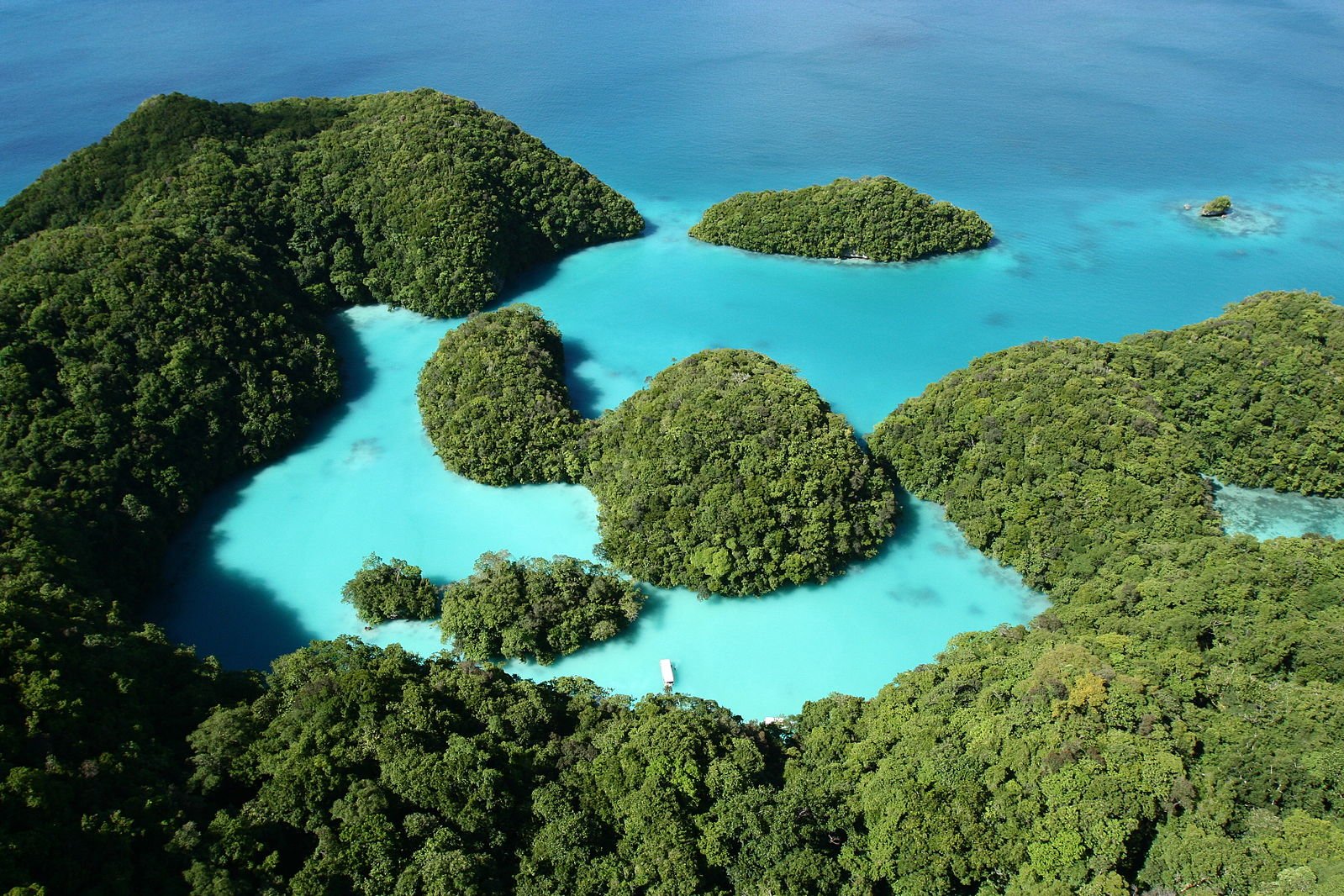A Mesei a Delal a Telid (A Taro Field is the Mother of Life)
By Abby Cariño, Environmental Studies ‘24
Ancient island cultures are on the frontlines of the devastating consequences of excessive anthropogenic greenhouse gas emissions. Some of the smallest island nations fight for the acknowledgment of environmental deterioration and push for climate change mitigation. One of the countries most heavily impacted by global warming is the Republic of Palau. Palau is an archipelago in Oceania covered by lush mixed tropical forest and sandy beaches. This country has an economy that relies heavily on subsistence agriculture and fishing. Situated in the west of the Pacific Ocean, its 340 volcanic and raised coral islands are home to just over 18,000 people.
Aerial view of Palau’s "Milky Way" cove and Rock Islands in the Western Pacific Ocean (Image Credit: Lux Tonnerre).
Thermal expansion of water in the Pacific Ocean is responsible for the archipelagos, including Palau, that face impending erasure from rising sea levels. This change in sea level causes shoreline flooding and coastal erosion. Sea level rise endangers farmers' livelihoods in coastal regions, as culturally meaningful food sources like taro are damaged by saltwater breaches. As sea levels continue to rise with warming ocean temperatures, coral bleaching becomes more common in reefs near Palau’s many islands. The damage and loss of habitat dramatically reduces reef fish stocks. Like taro, fish is another staple in the Palauan diet, making dwindling fish populations increase food insecurity for island regions. As heat levels continue to rise due to the climate crisis, tourism as a source of revenue for the economy also takes a hit. Rising heat in Palau’s Jellyfish Lake, a star tourist attraction, has caused the loss of around 30 million non-stinging Golden Jellyfish.
Golden Jellyfish during migration/Palau’s Jellyfish Lake (Image Credit: Richard Schnider).
For thousands of years, island cultures have sought to holistically care for the environment. The taro patches utilized in farming practice protect coral reefs through trapping eroded fine sediment that would otherwise flow out and into the ocean. While global warming is also responsible for the increase of typhoons and high intensity of storm surges, mangrove forests, like taro patches, have historically limited flooding damage during storms. However, during more frequent and intense ocean surges, some of these forests have drowned. Traditional agro-ecological strategies help maintain biodiversity and are key to protecting coastal ecosystems. Palau has supported protection of their environment in other ways such as enacting the Palau National Marine Sanctuary Act (PNMS). This law bans exploitative activities like industrial fishing and mining in 80% of the country’s territorial waters. Locally managed fisheries are only allowed to fish in the remaining 20% of ocean territory.
Similar species of Colocasia Taro that grows in Palau. Photo taken in Hawaii (Image Credit: Scot Nelson).
There is only so much small island nations can do to mitigate the encroaching impacts of climate devastation. Industrialized countries are responsible for the plight of island nations and have the ability to take immediate action. Funds are necessary for climate disaster compensation and prevention, but many have questioned whether wealthier countries have offered enough to help people survive biodiversity loss, heat waves, and climate-driven typhoons. In order for Pacific island nations to adapt to accelerating climate change, they not only need to engineer solutions to coastal erosion and sea level rise, but also require investments to sustain their livelihoods. Preventative measures allow for future island generations to preserve their holistic and traditional knowledge to care for the environment.



